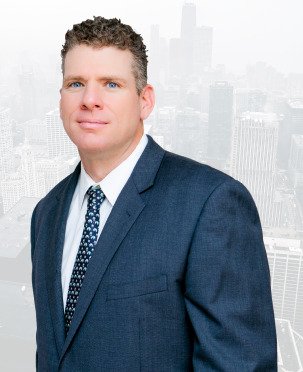
Podcast Description
Join us on the latest episode of “It’s No Accident,” where we dive into the intricate world of first-party insurance claims with our law partner, Chris Ferraro.
In this episode, Chris shares his extensive experience and insight into handling claims related to homeowners and commercial property insurance, particularly in the aftermath of hurricanes and other catastrophic events. Discover the challenges homeowners face with insurance companies, especially when dealing with inexperienced adjusters, and the impact of recent legislative changes on insurance claims.
Whether you’re a homeowner, business owner, or just curious about the complexities of insurance law in Florida, this episode offers valuable knowledge on protecting your property and understanding your rights. Tune in to empower yourself against the negligence of others and learn how to navigate the often murky waters of insurance claims with expert guidance from Nonni Homola Law Firm.
Episode Transcript
Today we’re here for another episode of It’s No Accident, and we have the pleasure of being joined by our law partner, Chris Ferraro. He’s a vital part of our law practice, handling a variety of cases, but with a particular focus on first-party insurance claims.
First-party insurance typically deals with homeowners’ insurance issues, but it also applies to businesses or commercial properties where there’s a direct relationship with the insurance company. Most homeowners have a policy, especially if they have a mortgage, and most have seen those premiums rise significantly in the last few years. First-party claims involve damages from hurricanes, storms, burst pipes—anything covered under the policy.
Chris got into this area through his background in construction litigation. The same experts who assess construction defects often evaluate storm damage or other property issues. Early in his career, he handled construction defect claims for school districts in South Texas. Around the same time, a major hailstorm hit the area, affecting many of the properties he was working on. That overlap led him into first-party damage claims.
Generally, if you have a pipe burst in your house, you’ll get an experienced adjuster to come out. But when a hurricane hits and damages thousands of homes, insurance companies hire less experienced adjusters just to keep up. In those situations, it’s not uncommon to see lowball offers. The insurer just wants to get a number out and move the claim along without having to pay out significant money right away.
Most people don’t fully understand how their insurance company operates until they file a claim. When a storm hits, they report it, and someone shows up. But they often don’t realize the extent of the damage. They might point out a tree through the roof or visible water damage, but they miss hidden or structural issues. That’s why it’s crucial to bring someone in who knows what to look for—someone who understands how water intrusion affects walls and framing.
After Hurricane Michael in 2018, there were many cases where insurance companies flat-out denied claims, even when homes had been condemned. The insurers weren’t prioritizing people—they were minimizing exposure. They blamed damage on settlement, construction defects, or lack of maintenance—anything to create doubt and deny coverage.
Even when homes were shifted on their foundations by hurricane winds, insurers often claimed the issue was pre-existing. In one case, a house’s entire frame had shifted two inches, making doors and windows inoperable. The insurance company said it was a construction defect. But most adjusters aren’t trained in structural engineering. They’re trained by the insurance company to look for ways to limit claims. It may not be explicitly phrased that way, but the result is the same.
Inconsistent decisions happen often. For example, you might see two-story houses with no roof coverage, while a shed in the same yard is a total loss. That’s usually because adjusters have been told to stop approving roof replacements. It doesn’t make sense unless you consider it from a cost-control standpoint.
At the end of the day, insurance companies are businesses. If outgoing payments start to outpace their reserves, they take steps to stop the bleeding. It used to be that if your claim was wrongfully denied or underpaid and you had to sue, the insurer would be responsible for your attorney’s fees if you won. That gave people with valid claims the ability to fight back.
That’s changed. Under current Florida law, you can no longer recover attorney’s fees. So now, if your claim is worth $10,000 and the insurer offers $2,000, and you hire an attorney who recovers the full $10,000, your attorney’s fee comes out of that recovery. Instead of using all $10,000 to repair your roof, you may only have $6,000 or $7,000 left after fees.
This gives insurance companies less incentive to pay full value. They know many people won’t sue over small claims, and small claims are common. If your roof replacement is $10,000 and your deductible is $5,000, you’re already at a disadvantage. A denied or lowballed claim means you either give up or take less than you’re owed.
The new legislation disproportionately affects lower-income families. A modest home with a $10,000 claim is less likely to attract an attorney now that attorneys are paid from contingency fees instead of recovering fees from the insurer. Most attorneys simply can’t afford to take on smaller claims unless they believe the recovery will be substantial.
The insurance company has the resources to hire engineers to justify its position. The average homeowner doesn’t have $10,000 to pay an expert to say, “This damage wasn’t caused by settlement.” That’s where the system breaks down.
Previously, the system at least gave people the ability to fight. Now, unless the claim is large—often $25,000 or more—it’s difficult to find representation. And that’s incredibly unfair when you consider that most people’s greatest financial investment is their home. If a storm damages that home, and the insurer underpays or denies the claim, you’re effectively losing years of investment.
And it’s not just the home’s structure. Personal belongings are also affected. People have contents coverage for things like clothes, furniture, appliances—but how do you prove what you had if it’s destroyed?
Most people don’t keep receipts for their belongings. So take photos before a storm hits. Walk through your house with your phone. Photograph your refrigerator, washer, dryer, microwave—anything not permanently attached. Those are considered contents, and they’re expensive to replace.
Walk through your closets, your drawers, your bedrooms. Take a video. It’ll help jog your memory after a loss, and it gives insurers less room to dispute your claim. I’ve had clients denied on the basis that they couldn’t possibly own the items they claimed—whether it was cologne, purses, or electronics. Without photos, those items become suspect.
The bottom line is this: document everything. The structure, the contents, everything. Doing that could be the difference between having your claim paid fairly or not at all.


